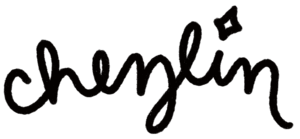This semester I took printmaking where we did some intaglio(pronounced intalio... I seemed like an idiot because when I signed up I went around telling everyone how I was taking intaglio and I emphasized the g.. anyway) We also did some lino cuts and a colograph, but I'll post all of my other prints on another day. Today I've decided to do a kind of step by step of intaglio. Not a tutorial, because there are a lot of little things that you just learn from watching someone or from learning from them in person. Anyway, on to the pictures!

My sketch on the right, with my two plates covered with asphaltum and etched in to. You'll see why I did two plates in the next few pictures.

Dun dun dun! The acid room!

Here's the acid, you dunk your plates into it and it eats away where there is no asphaltum.
After 30 minutes to an hour, they're ready! There are a few steps I skipped here.. it gets repetitive. According to how you want your plate to be, you stick it into the acid until it gets to how you want. You take them out and clean all the gunk off, and then you're ready to print!

I'm using the knife to spread out the ink so I can pick out any dried pieces.

Smear it on! Make sure to get it into all of the etching!

All smeared in.

Here, you take a tarlatin(basically cheesecloth that has starch on it) and use that to wipe up the excess ink.
There should only be ink in the etching when you're done.

Here I'm smearing ink into the main plate.

All wiped up and ready to ink! I didn't wipe the first plate too well, you can still see some teal around the etching. Oh well, this was just a test print to get the registration right!

The printing press! For intaglio you have to use damp paper, so what's not seen here is that I had to soak the paper for at least 20 minutes. I taped it to the press to get the registration correct.

After it's been run through. You can see the additional tape I put down to help me place the plates.

Replace the plate with the other one, put the paper down and run through again!

Here I'm pulling the paper away... hopefully the registration is good!

And... it's not. It's off a lot :(

Here's another. I just ran another piece of paper without inking up the plates again. You can see just how much ink the paper soaks up in the first run. I didn't bother to ink up the plates again because I was just trying to get the registration right.. It wouldn't make sense to waste ink.

Here's another shot to show how bad the registration is.
Thankfully I finally got it sorted out when I actually went to print the final edition. I used pink instead of teal as well. I'll post all of my prints on another day! :)






























